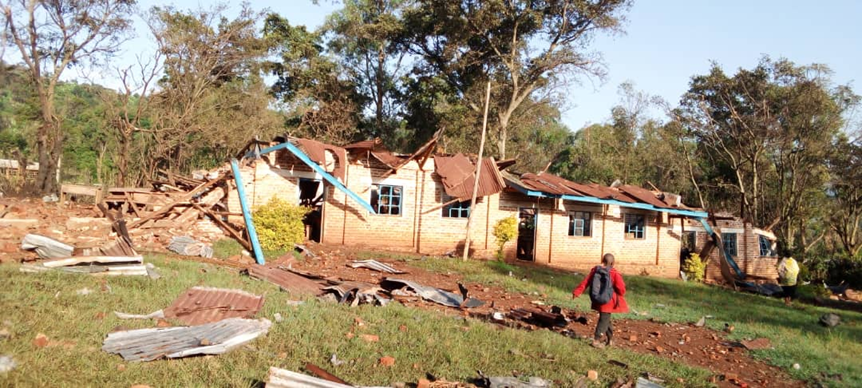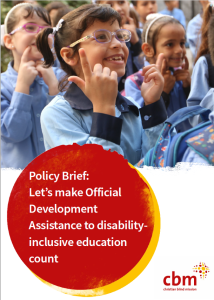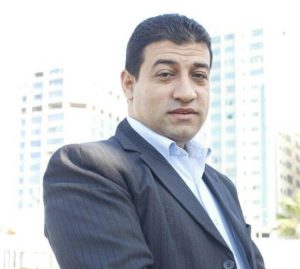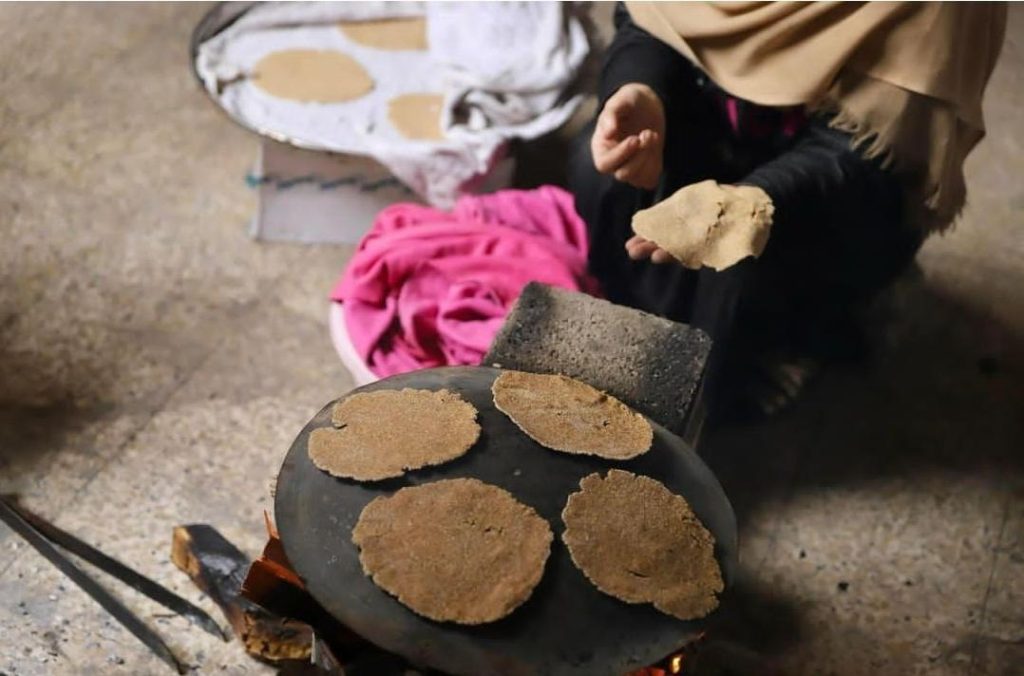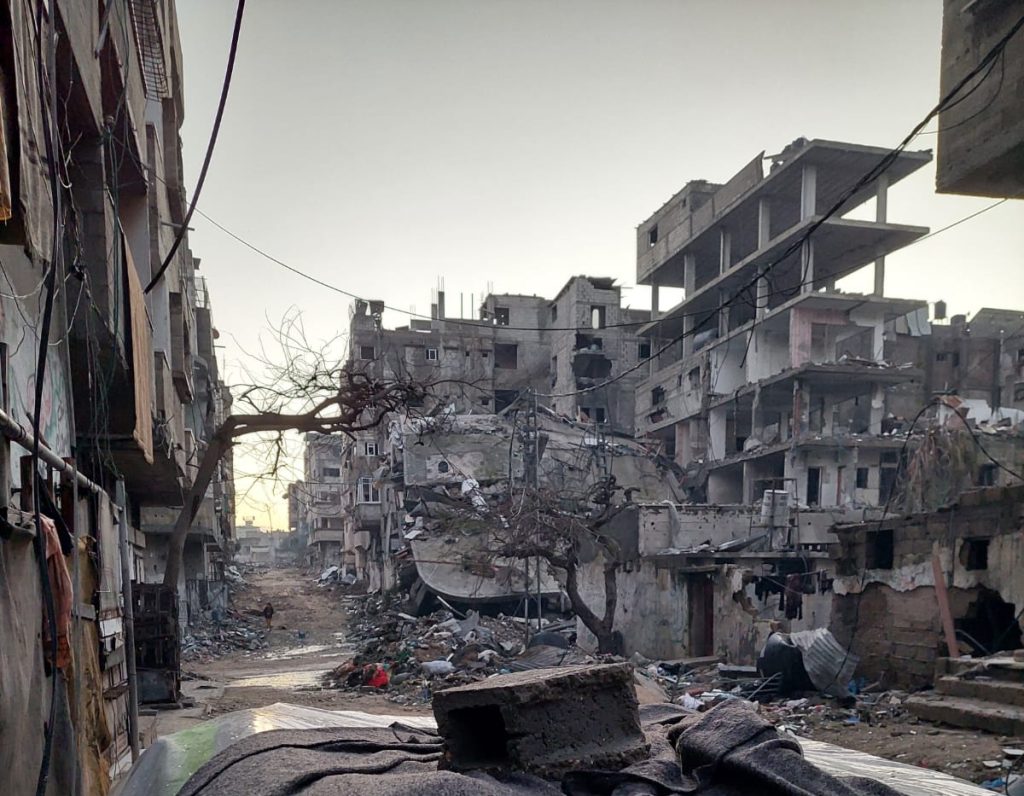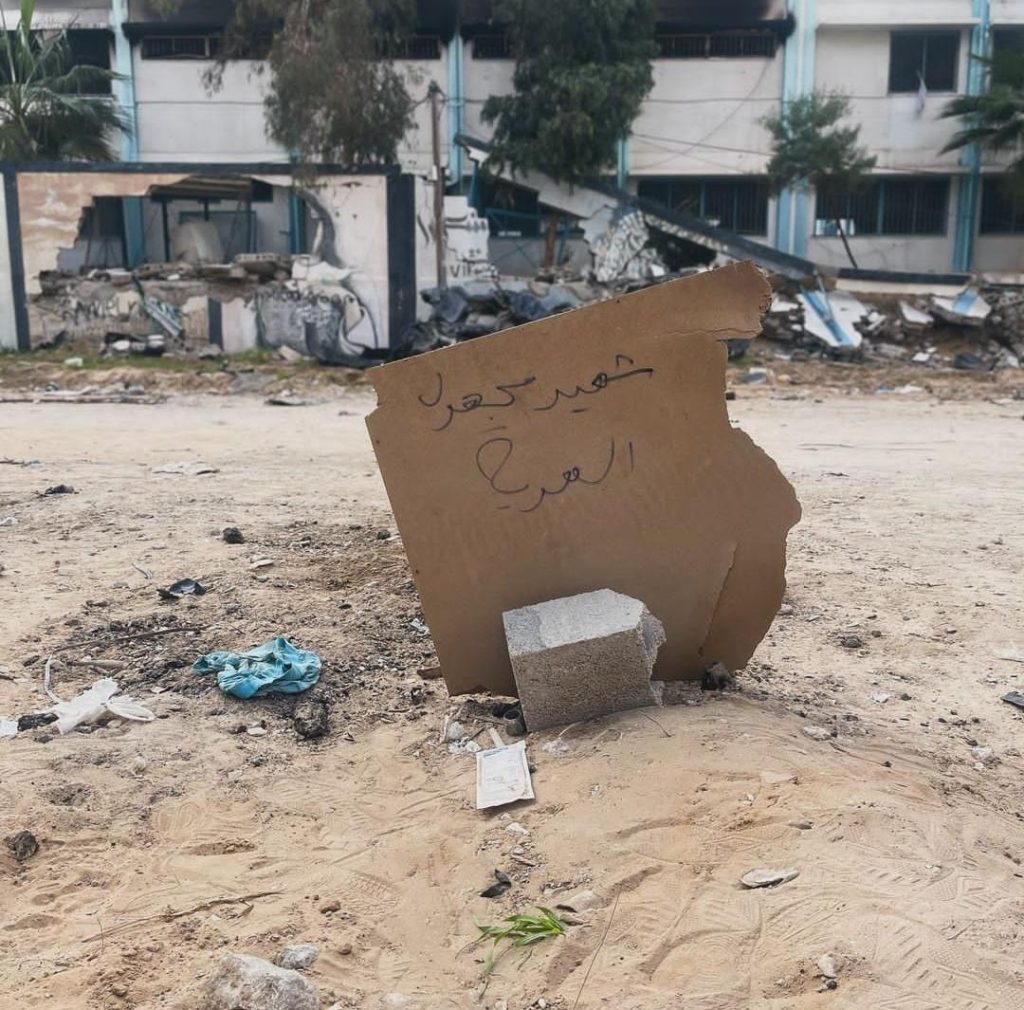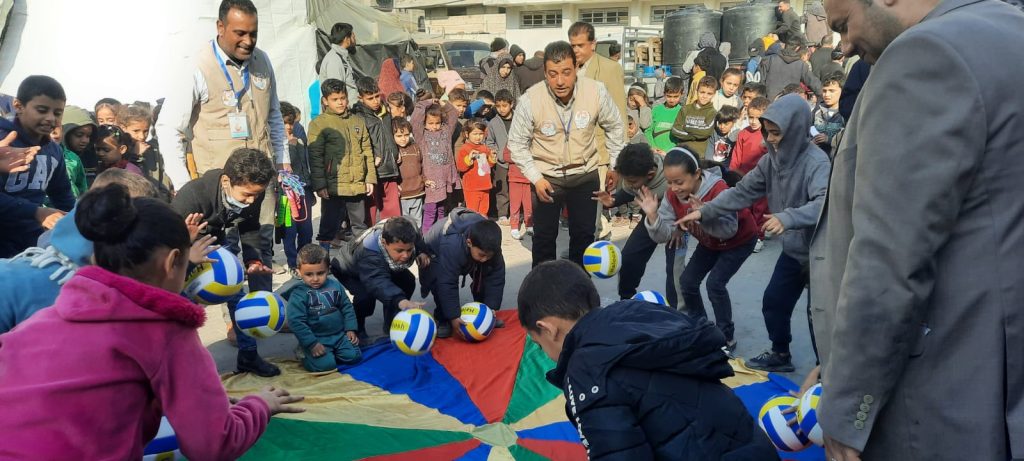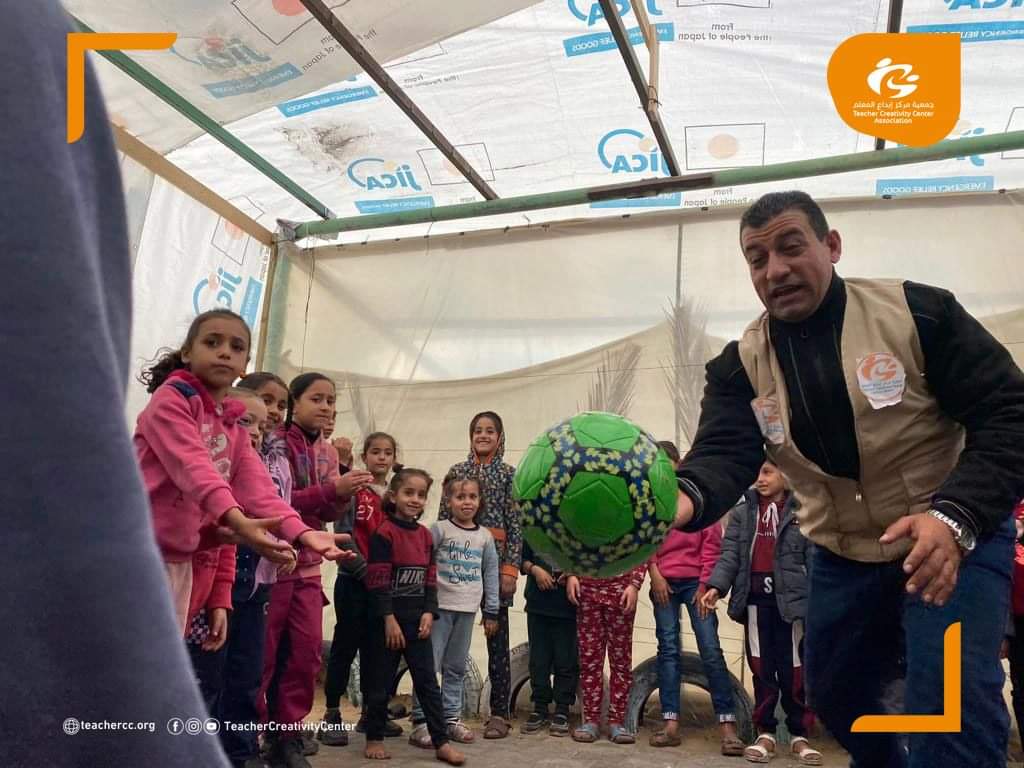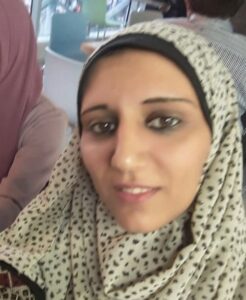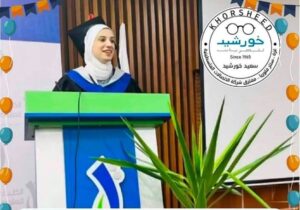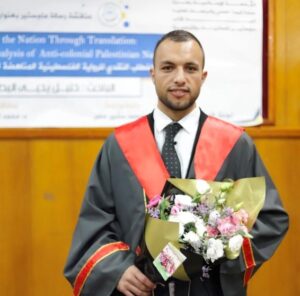This is the transcript for our episode of the Inclusive Education: Unheard Stories podcast, with Vibhu Sharma.
Listen to the podcast on Spotify.
Note: This transcript has been lightly edited for readability.
[Opening music]
Vibhu Sharma
Science is very clear: 90% of the brain development happens by the age of five. And that’s a very strong reason why introducing assistive technologies to children in early learning is critical.
Ayman Qwaider
Hello, everyone. Welcome to the Enabling Education Network podcast series, Inclusive Education: Unheard Stories.
I’m the series host Ayman Qwaider. In this series, we hear from education stakeholders about their experiences of learners who are most at risk of exclusion, marginalization and oppression and we look at ways to enable their inclusion.
I’m delighted to be joined today by Vibhu Sharma, a disability and inclusion consultant specialising in inclusive education and assistive technology with particular focus on early childhood education. Vibhu, welcome to the Unheard Stories. I’m also joined by my colleague, my EENET colleague, Ingrid Lewis. Welcome to the podcast, Vibhu and Ingrid.
Vibhu Sharma
Thanks, for having me on the podcast.
Ingrid Lewis
Thanks, I’m really looking forward to the discussions today.
Ayman
Can we start by hearing why the topic of assistive technology in inclusive education is so important to you? Maybe tell us a little bit about your journey to becoming a consultant focusing on this issue.
Vibhu
Why is assistive technology, inclusive education, early childhood education so important for me? Yeah, for me, it’s not just a professional issue. It’s very personal. I grew up relying on assistive technologies myself and I have really seen how something as simple as, you know, in my case, because I’m visually impaired, I use a screen reader.
But what that made me realise is how using something as simple as that could completely change the opportunities that you have in life. But at the same time, using assistive technology also came with stigma.
So, some classmates saw me as different. And I remember one particular instance where we had just written a test in the class. And one of my classmates walked up to me and said, “oh, you know, for you it’s so easy because…”. So because I was using the screen reader, I would sit in a separate room to write my exam, so that others didn’t hear my screen reader or they didn’t see the computer screen. And so they couldn’t copy my answers. So the classmate walked up to me with her own assumptions. And she said, “for you, it’s so easy because you sit in a computer room and write the exam so the teacher tells you all the answers”.
And then there were other instances that the classmates would really like, see me as different. But at the same time, what I do want to mention very briefly over here, is that we often think that assistive technologies are only high-end devices. I’ll elaborate more on it during the course of the conversation. But assistive technologies really don’t have to be high-tech devices. It could be something as simple as using a large print. So going back to the initial question that you had asked me, in the very initial stages, some of the teachers even that I met had issues with me using assistive technology.
So part of what drives me today in my work at the personal level is making sure that children don’t have to carry that stigma. They don’t see assistive technology as a marker of difference, or even as a luxury, but they should rather see that assistive technology is a tool that opens doors and it’s empowering for children with disability.
Ayman
That’s really awesome. Thank you so much, vibhu. I think it’s really, you sum it up very nicely, the issue that learners should not feel that stigma when using assistive technology in order to ensure that the content is accessible to them. So, as well as focusing on assistive technology, you are also passionate about inclusive early years of education, bringing the two issues together. Why do you believe assistive technology is particularly important for inclusive early years learning?
Vibhu
So as I was mentioning, assistive technology is not only about high-end devices or high-tech devices. In reality, assistive technology has to be something that enables presence, participation and achievement of children with disabilities in mainstream classrooms.
And assistive technology then could mean something as simple as a pair of glasses that we all usually use or a communication device. Or anything under the sun that makes learning accessible. So, you know, for example, we could be using bottle caps to teach children how to count. We could be using something as a large font printout that children could use to read.
So all these in essence could be assistive devices or assistive learning materials that enable children to learn. As I began working at the intersections of assistive technology, inclusive education, early years, and I’ve interacted with more and more people, I realised that there was even a bigger problem.
Science is very clear: 90% of the brain development happens by the age of five. And that’s a very strong reason why introducing assistive technologies to children in early learning is critical because if we wait until a hypothetically correct age to introduce technologies to children, we already end up losing a critical window of development in which most of the learning around socialisation, around being independent, even around being, you know, picking up on learning how to learn happens.
So what I have found is that children should be introduced to technologies as soon as they need access to information. And yet what we notice is that despite technology being available to us everywhere in our lives, assistive technologies at the moment you add adjective ‘assistive’ to technology. And it’s still rarely a part of any education plan.
So you think about a child who goes to preschool, who uses a hearing aid would be much more beneficial in comparison to us waiting until they reach an age of seven or until they reach a primary school to introduce them to that hearing aid.
Because what happens then is that the difference between social development is enormous. And often what I have also noticed that I’ve been working on these issues is that that barrier is not only in planning, it’s also political will, it’s also finance. So too often you would see that education plans would not prioritise assistive technology as I was saying earlier.
And this is also the reason why the current initiative that I’m working on, which is the Act for Early Years Campaign, is so important because the three goals that the Act for Early Years Campaign has is universal access to pre-primary and pre-school education, universal access to health care, and universal support for families and child benefit. But the question here is how are children with disabilities then going to get universal access to pre-school unless they don’t get access to assistive technologies, which is what they essentially need to access pre-school.
And that is the reason, you know, why I keep saying everywhere I go that as early years systems expand, they need to embed assistive technologies in them. They have to go hand in hand. They can’t be done separately. Otherwise we just end up investing millions of dollars and building shiny new systems that don’t do anything and that essentially just leave some children far behind.
Ingrid
Vibhu, you said earlier that, you know, there’s this assumption that assistive technology is high- tech and it doesn’t have to be. Why do you think there is this sort of common assumption that when we talk about assistive technology, we’re only referring to the high-tech stuff. Why is there this assumption?
Vibhu
I think primarily because as I was saying, you know, the moment you add this adjective, ‘assistive’, right, to technology, people begin to think, oh my goodness, there’s something like really out of the world or really extraordinary that you are talking about, something that they have not heard of. What I have experienced both professionally and personally is that a lot of the devices that we use every day, like all of us use smartphones, all of us use Windows computers or majority of us use Windows computers. They all come with accessibility features in-built.
The Apple iPhone or any Android has a voiceover and a talkback, respectively, that is a screen reader. They have magnification features, but people are not aware of those. Right? So, the moment you tell them assistive technology, they would be like, oh, yeah, there’s some kind of technology available in some remote corner of the world that they don’t know. Whereas that’s not true because if you were to practically think about things that are around you, you could use them in an assistive way and that would become your assistive technology. I said, you could use bottle caps to introduce counting to children and that’s not even technology.
Ayman
I think it was really interesting, this point that you’re making, Vibhu, around how assistive technology doesn’t have to be high-tech because we often see all these organisations coming together and just developing these big projects on expensive high-tech, etc., even though you emphasised in your commentary now that it doesn’t have to be that high-tech. It can be simple as tool, glasses, bottle caps, communication devices that basically support learners.
And I really would like to learn more about your research, which is basically the next question that we would like to put to you, that you’ve been researching the challenges and the gaps in relation to the use of assistive technology in early childhood development and education. Can you share some of the main insights from your work that you’ve done?
Vibhu
Recently, I wrote a paper for Theirworld’s Act for Early Years campaign. The paper is called “All Means All: embedding disability inclusion in early years financing”.
One key fact that I have seen over and over again while I was researching for this paper, and even otherwise throughout my work, is that early childhood commitments and disability inclusion did not really speak to each other. They exist in silos.
So, if you look at any early years research or report, they would not speak about disability inclusion. You look at anything that has to do with education for children with disabilities, you will hardly find a mention of early years. In fact, if you see Article 24 on education from the UN Convention on the Rights of Persons with Disabilities, it does not include early childhood education. And SDG target 4.2, which talks about early childhood education, does not mention anything on children with disabilities.
So, what I have noticed is that the silence trickles down in policies. And the gaps are stark as a result, obviously, because there is clearly a lack of data on children with disabilities. There are weak or even absent policy frameworks. And, of course, almost no dedicated investment in assistive technology, that I was saying earlier as well.
So, with that said, the risk is enormous. Because, we are at the intersections where millions of dollars are going to flow towards investing for early childhood education. But we, at the same time, build shiny new systems that would clearly leave children with disabilities behind.
And without a deliberate effort to include children with disabilities, we are not going to be able to include them. There has to be a consistent intentional effort whereby we are making sure that we are investing for inclusion.
So, as the campaign that I’m working with calls for at least $1 million in new funding on early childhood education, the argument that I have highlighted in my research paper is that inclusive early-year systems have to include inclusive investment for children with disabilities. Because that’s not just a moral imperative, it’s also a smart investment, in equity and in social justice. And only then can we say that we are moving towards building a world where no one is left behind and moving towards achieving the 2030 agenda.
Ingrid
Can I ask a question around the response that you feel you’re getting or not getting from mainstream early childhood providers and supporters? Are you feeling that there’s a real interest to bring disability inclusion and inclusive education into the early years, or is there sort of any resistance there?
Vibhu
I mean, I think it’s difficult to answer that because people have had a very, in my experience, at least, some people that I’ve worked with, have had a very specialist understanding of disability. So you know, it’s only now I believe that people have begun to understand that inclusion means that you have to include children with disabilities. All means all in the sense that children with disabilities are inherently or by default included. And people have had an understanding that disability is a specialist area.
They don’t know how to respond to child who has a disability, and hence we have to have a special provision. Whereas, in reality, you need to be moving away from those thoughts because we are talking about inclusion here. When I go to people and say, you know, we are investing in early years, we are talking about all children, and that means children with disabilities. Yeah, but we don’t know how to accommodate them.
And like, it’s okay if you don’t know how to accommodate them. You don’t have to be the one who is accommodating them, but you have to make sure that inclusion is part of your investment. You have to say, okay, I am ready to spend this much amount of money on this particular initiative, but it has to be inclusive and you have to show me how you are going to use that money towards including children with disabilities.
And so I think it’s a very mixed response. People don’t really know how to do inclusion, but I think it would be unfair for me to say that there is an absolute lack of will. They want to do it, but they also want to also need to learn how to do it.
Ingrid
It would be an ideal opportunity for us to promote EENETs, “Inclusive Beginnings” materials, wouldn’t it, where we’re helping people learn how to be inclusive in early years.
Vibhu
Yeah, exactly.
Ayman
Thanks Vibhu. I think a number of key points there, and really what stuck with me is around that, you know, that there is more work needs to be happening around the disability and the early childhood education policies, which is still continuing to be disconnected.
But Vibhu, let’s zoom out again, and you have also researched the issue of assistive technology and inclusive education generally at all levels, not just at the early years. Tell us a little bit about that research and the sort of action that you have, you’ve been recommending.
Vibhu
Yeah, sure, thanks, Ayman. So it was a couple of years ago now that I conducted a research on assistive technology, with children with disabilities their teachers studying in main schools. The report was published under the title “Disabilities and Technology, How We Can Expand Inclusive Education to achieve SDG4”.
So what was unique about this research or this report is that it was not based on existing research. Instead, as I mentioned, I looked at the real opinions of real people. So I spoke to children with disabilities directly who are enrolled in mainstream schools and are using assistive technology. I spoke to their teachers. And the third category of people who I spoke to was people who work in NGOs or INGOs on assistive technology and advocate for their provision.
So what I found was that there are multi-layered barriers. One is, of course, affordability. Many families and schools cannot afford assistive technology.
Second is awareness. Parents and teachers don’t know what exists. They don’t know what they do.
Third, there’s system readiness. So even where you have technology, even if a child has a device, items may not be adapted or teachers may not know how to integrate assistive technology.
And the fourth challenge – I find it very unfortunate that it’s not something that often comes up in conversations that take place about assistive technology – is the stigma that is associated with the assistive technology. Several children shared with me as I was doing this research that they were reluctant to use their assistive technology in the classroom because they felt that the other classmates would see them as different.
Or sometimes even when they had mainstream technology or an assistive technology, the materials that they were given were not necessarily adapted or were not as accessible to be used on that assistive technology. So, for example, if a teacher gives out a PDF document in the classroom, everybody would be using a device, like a mobile phone or computer or whatever to access it. But if that PDF is not accessible, then a child who is, for example, using a screen reader will not be able to use that PDF even though it’s a softcopy, even though it’s available to them. So that again induces a feeling of being different because even though you have a document in a digital form, you still need somebody’s assistance to use that. So that induces that feeling of dependency on others, whereas you see other kids around you doing it independently. And you could have done it independently if the document was accessible.
But I mean, in reality, obviously, you know as well as I do that, technology is supposed to empower children and especially children with disability. However, what we notice in these experiences or in these cases is exactly the opposite of that. So I believe the challenge is not just about technology. It’s also about accessibility. It’s about systems and most importantly, it’s about mindsets.
So I had developed 12 recommendations in that research which were based on my conversations with over 100 people in 39 different countries. But I will highlight the top four recommendations that also tie back with the challenges that I was speaking about.
So with affordability, the recommendation that I had based on conversations was that it’s better if all mainstream technologies have accessibility features. So this way you don’t really have to go looking for a special device. You use the same device as your peers and that helps to reduce the stigma to a certain extent.
And materials need to be available in accessible format because we can’t essentially just stop at having the device. And if you don’t have the materials that you could use on that device, you can’t use the device.
The third, which is again very important, is awareness and also training. So teachers, parents need to know what already exists and how much of that they could use it. So you know the example of the PDF document that I was giving, if you created that PDF in an accessible format then the child would not have any issues and then the child would be using everything in the same way as a non-disabled child.
The last recommendation that I would share here is of course addressing stigma. So if we normalise the use of assistive technologies in classrooms which means through campaigning, peer learning, and also like you know school level trainings, then children would begin to see assistive technologies as an enabler, as something that’s opening doors for their peers with disabilities, and not as a marker of everyday learning. And that will together become the source for change and for inclusion.
I believe these recommendations also reinforce the very essential key point which is that if these barriers continue to exist in the early years, then children must be left behind all the time. So that is the reason I believe through my research on assistive technology or even through supporting the Act for Early Years campaign, I would always emphasise that we need to start early and we need to integrate assistive technologies in early years and early learning.
Ingrid
Your example with the PDF was really clear that if the teacher had probably just a very basic bit of training in how to reformat the PDF into more accessible way, then it would, you know, it would be perfectly accessible for the learner with the assistive technology. What are the kind of barriers to teachers learning that? What would you say is the biggest challenge in getting teachers to sort of be trained on this, on what is relatively simple but perhaps for teachers doesn’t feel very simple technology changes.
Vibhu
That’s very true, you’re very right. What is relatively simple, teachers won’t feel that simple because they are, you know, more acclimatised to working on things in a certain way and change is difficult.
What I also noticed in the assistive technology research that I was doing was that I asked teachers whether you think training would benefit you and there were some who said yes it would and we wish that we got some training. But obviously then again there was a lack of resources or financial resources or even lack of resources on materials that they could use to learn how to make things accessible, for example.
I believe and you would see different challenges and different projects for teachers because some of them clearly don’t want to learn because they don’t want to change their way of working. That is what you were also saying that one is relatively simple is not that teachers won’t feel that accessible as well but at the same time it could also be lack of resources for teachers to learn even if they want to learn.
Ayman
Thank you, I think teacher training really needs to be incorporated in our conversation and podcast all the time and was possibly linked to some other some of the EENET resources when it comes to this.
Ingrid
It’s interesting because when we look at what we’ve got in most of the teacher training courses that we’ve been involved in, the question of how to integrate technology in doesn’t really come in.
Vibhu
Again you know like the added challenge like you tell them to integrate technology, but they do not know that even the computer that they are using, turn on the in-built screen reader and that would become assistive, right.
I believe, you know, the lack of awareness you have a phone turn on voiceover on it if you have an Apple phone and that would become assistive for somebody who needs it, but we don’t know that these features exist and hence we don’t know how to integrate technology in our teaching.
Ayman
Thank you, thank you Vibhu for sharing these I would say really powerful recommendations when it comes to assistive technology, and also making mainstream devices accessible for learning material [to] make it more inclusive.
But let me ask you this, if you could ask our listeners to do one thing on this issue what would it be, and whether there are parents, educators, advocates, policy makers, what is your message to them, like what would you like to leave them with?
Vibhu
My main message to anyone would be every child deserves the best start in life and assistive technologies is part of making that happen but right now early years investments are incomplete about addressing assistive technologies and that’s fact.
Every dollar that is spent without factoring in children with disabilities is simply reinforcing inequality and that’s exactly why I would say the Act for Early Years Campaign calls for inclusion right from the beginning, right from the age of zero, because if you get it right in the early years we set children up for a lifetime of success.
At the same time, I think we need to do obviously a lot more to share the stories of what works. There are innovations that make it viable in different contexts and don’t have to be the ones that cite big companies, so we really have to make sure that the stories of using assistive technologies that often go unheard don’t go unheard.
I also want to highlight that assistive technologies, early years, and inclusion are simply inseparable. We need to strengthen all three together because we can’t move ahead in silos. So if I was to give a message to different groups of people who might be listening to this conversation, then to policymakers I would like to recommend both assistive technologies and budgets in future training and in your plans for investment.
For educators, I would like to tell them to try out both low-tech and high-tech technologies and also normalise assistive technologies as part of everyday learning.
Parents, I would like to advise them to keep asking the school of their child whether inclusion and assistive technology is part of what they offer because it’s the parent’s voice ultimately that pushes accountability.
And for advocates on inclusion on early years on disability on anything, of course as I said they need to share the stories of what works, especially the grassroots initiatives because they should not be the ones that go unheard and which is not which does not work towards creating the world where only initiatives that would cite big tech giants get to be seen or get to be heard. So I believe small initiatives need to be heard as well.
Ingrid
That’s a fantastic summary I think there’s some really good messages there actually. Vibhu thank you.
Ayman
Okay thank you so much Vibhu for sharing so many valuable insights today with us and reminding us that assistive technology needs to be prioritised in inclusive education for all learners of all ages. Thank you.
So before you go there are just time for our quick-fire questions. We will be asking all our guests the same three questions and we need short and snappy answer from you.
Are you ready Vibhu?
Okay, if you had a magic wand and could make one education-related wish come true, what would you wish for?
Vibhu
That every child including those with disabilities could learn in inclusive classrooms with assistive technologies available when it’s needed.
Ayman
Thank you. The second question, if you had to go back to a school now which school would you go to?
Vibhu
I believe it would be my own school but with the caveat that the assignment will have to be fully inclusive and not just mainstream.
Ayman
And finally question three, what new hashtag would you like to see trending after this podcast?
Vibhu
#InclusionCannotWait because every year we delay we lose potential.
Ingrid
I like that one.
Vibhu
Yeah, you should regularise it on social media with a credit to me because I have been saying it over and over again.
Ingrid
Excellent, we’ll get it trending.
Vibhu
Get it trending and tell everybody that I created it because I have been saying this in all conferences I present, inclusion cannot wait you need to understand.
Ayman
I think we’ve reached the end of this podcast ,but I really would like to thank you so much Vibhu for sharing all this really insights with us today. It’s been really informative and you’ve reminded us really important issues around assistive technology, early years inclusion that cannot wait and also the real change that we would like to see happening which I don’t think it’s happening in silo but it has to come through like intersectional work, I would say, and at all ages as well. So really thank you so much and thank you for sharing the recommendations as well with us and your professional your personal experience. We really appreciate you, thank you so much Vibhu.
Vibhu
Thanks Ayman, it was my pleasure to be on the podcast and share some of my experiences and my insights. Thanks so much for having me.

